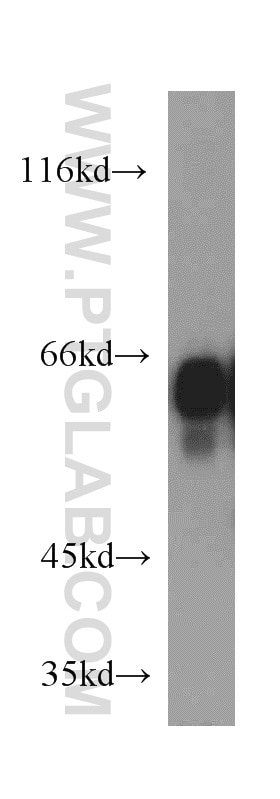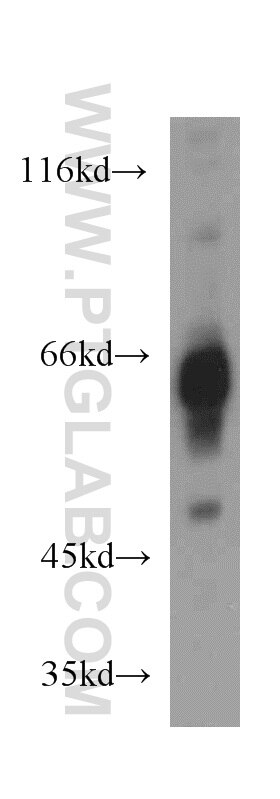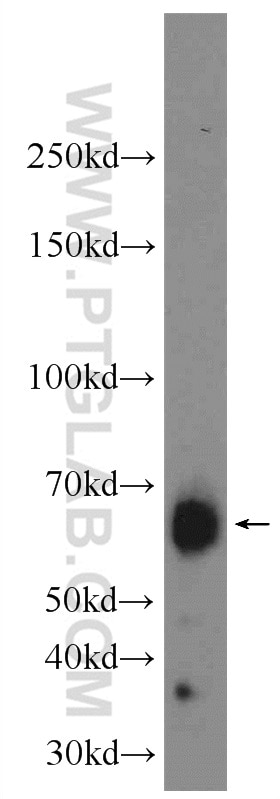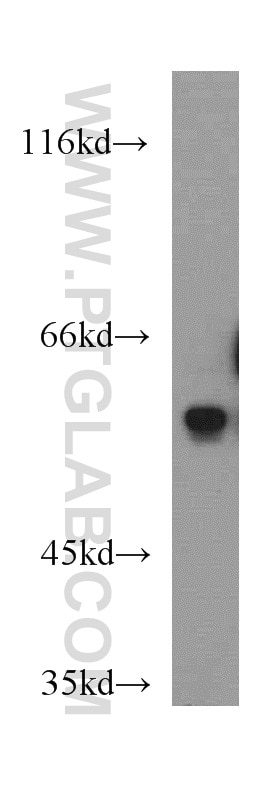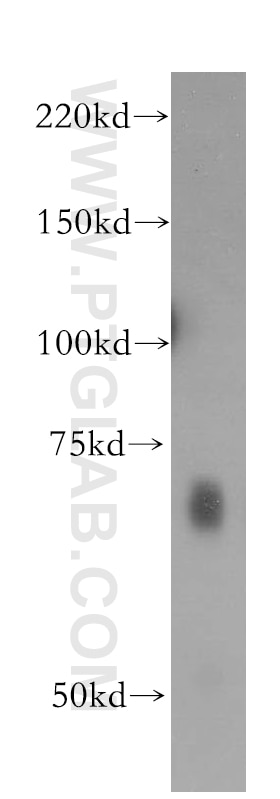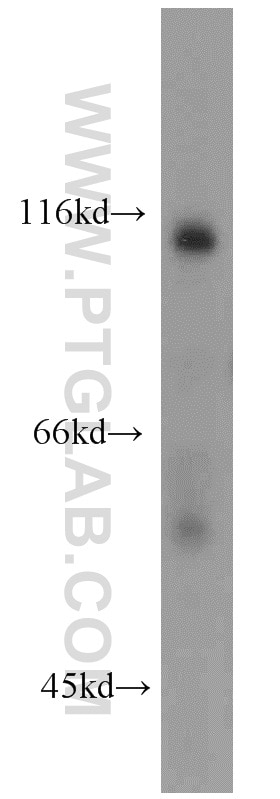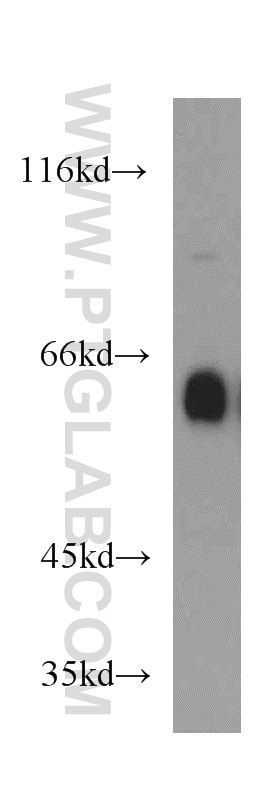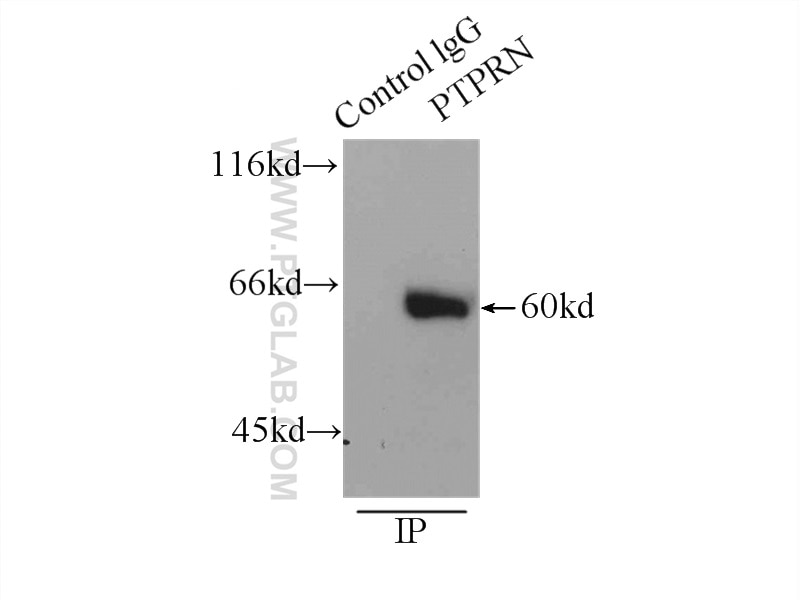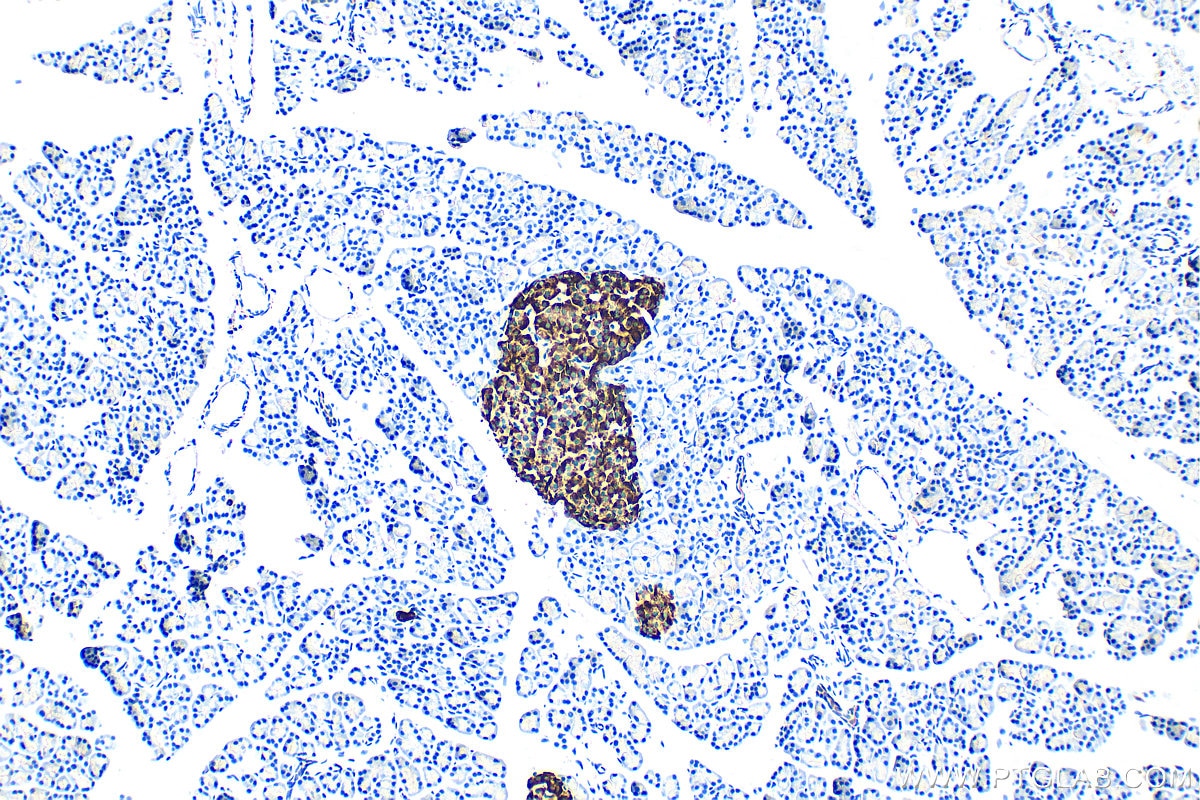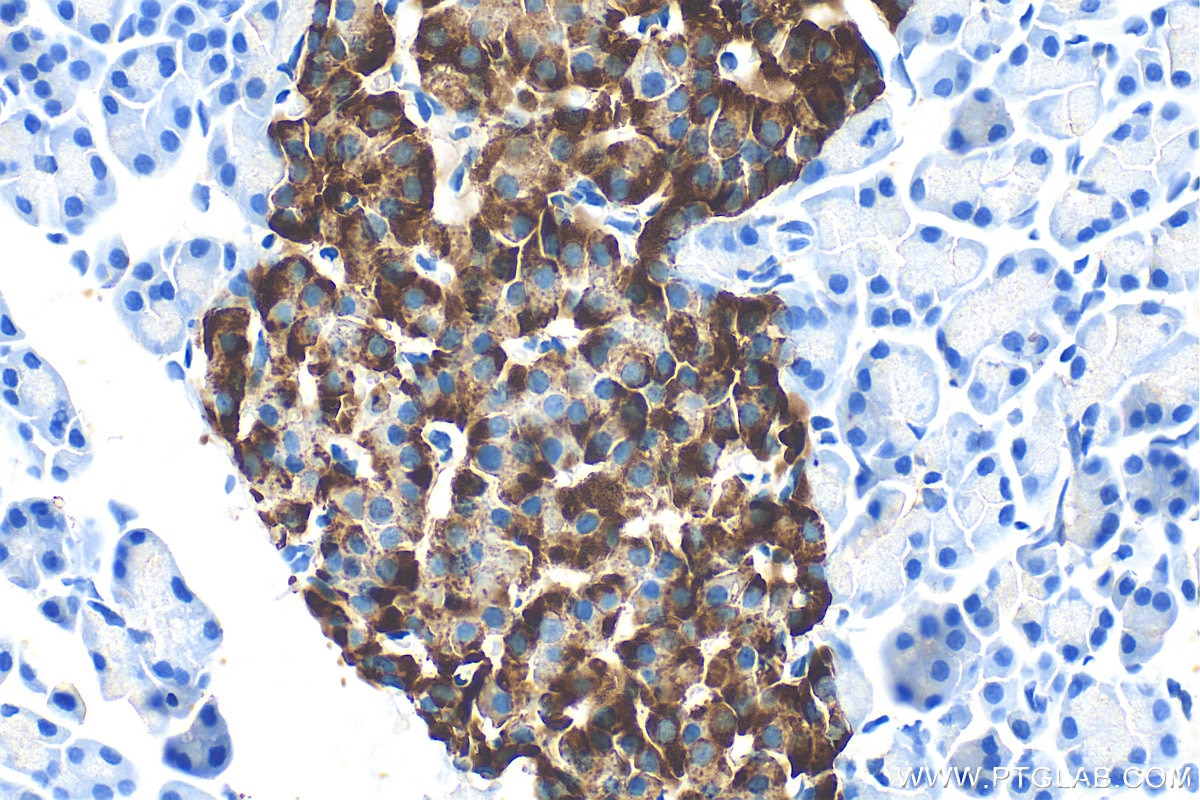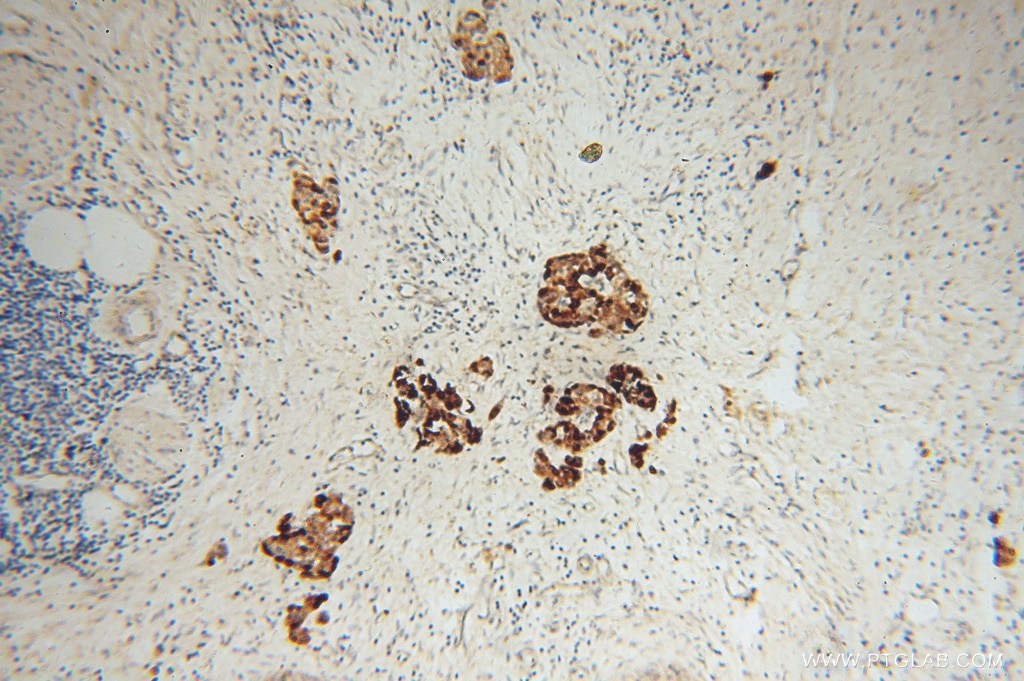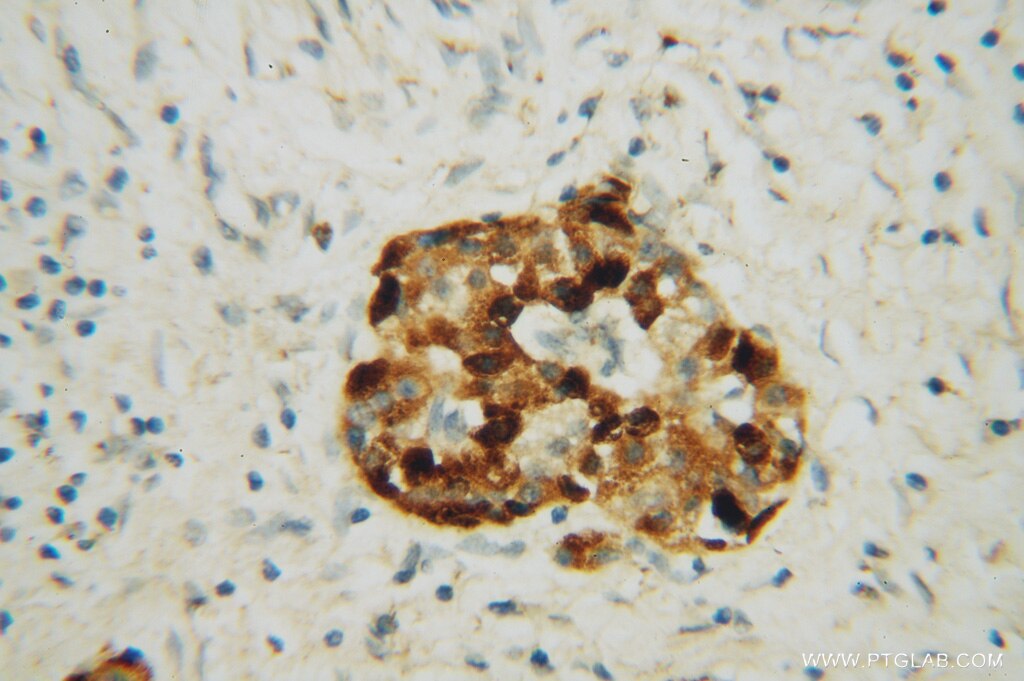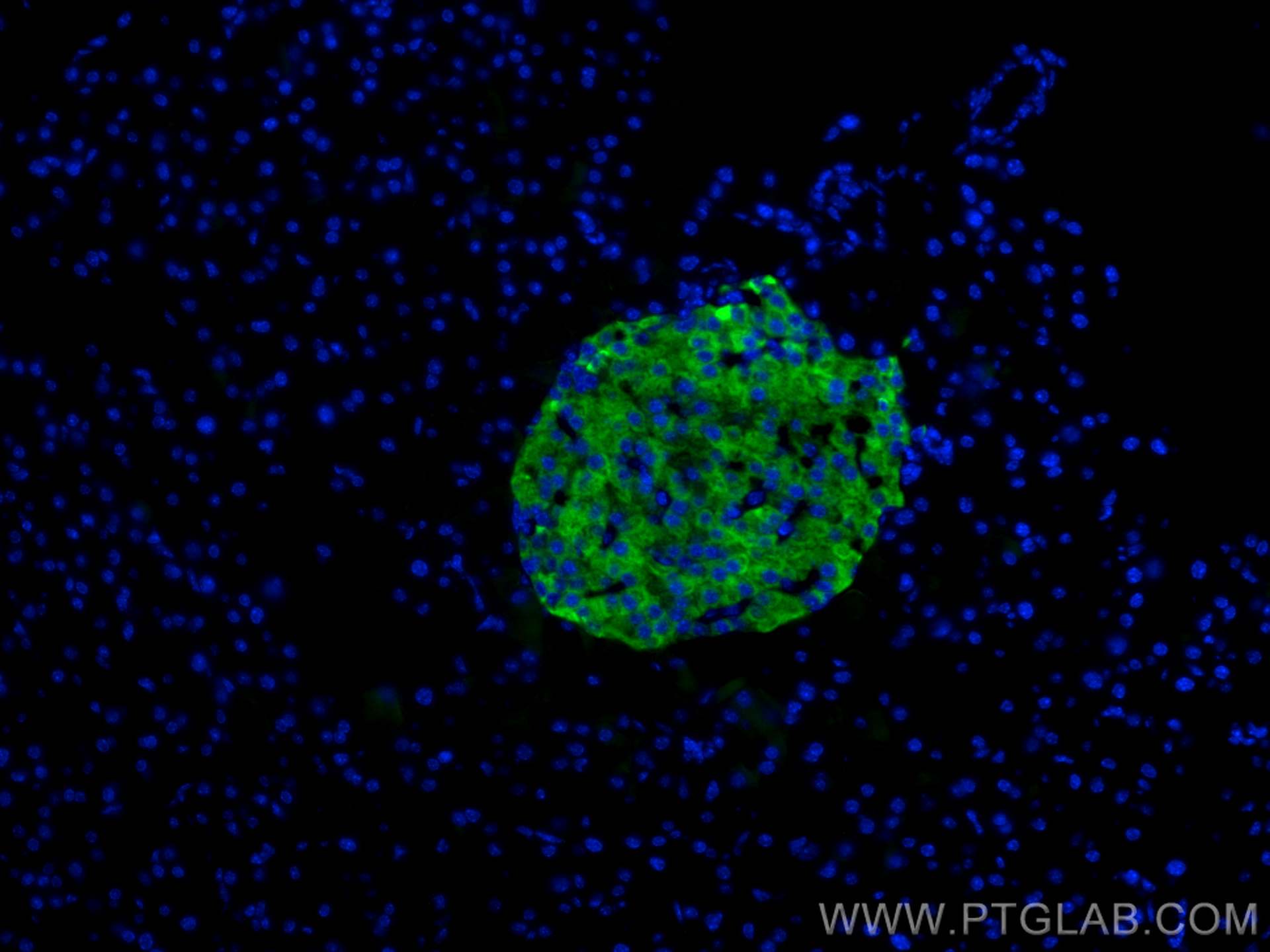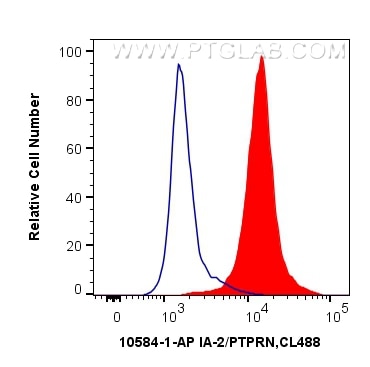Anticorps Polyclonal de lapin anti-IA-2/PTPRN
IA-2/PTPRN Polyclonal Antibody for WB, IHC, IF-P, FC (Intra), IP, ELISA
Hôte / Isotype
Lapin / IgG
Réactivité testée
Humain, rat, souris
Applications
WB, IHC, IF-P, FC (Intra), IP, ELISA
Conjugaison
Non conjugué
N° de cat : 10584-1-AP
Synonymes
Galerie de données de validation
Applications testées
| Résultats positifs en WB | tissu cérébral de souris, cellules HEK-293, tissu cérébral de rat, tissu rénal de souris |
| Résultats positifs en IP | tissu cérébral de souris |
| Résultats positifs en IHC | tissu pancréatique de rat, tissu de cancer du pancréas humain il est suggéré de démasquer l'antigène avec un tampon de TE buffer pH 9.0; (*) À défaut, 'le démasquage de l'antigène peut être 'effectué avec un tampon citrate pH 6,0. |
| Résultats positifs en IF-P | tissu pancréatique de souris, |
| Résultats positifs en FC (Intra) | cellules HEK-293, |
Dilution recommandée
| Application | Dilution |
|---|---|
| Western Blot (WB) | WB : 1:500-1:1000 |
| Immunoprécipitation (IP) | IP : 0.5-4.0 ug for 1.0-3.0 mg of total protein lysate |
| Immunohistochimie (IHC) | IHC : 1:50-1:500 |
| Immunofluorescence (IF)-P | IF-P : 1:50-1:500 |
| Flow Cytometry (FC) (INTRA) | FC (INTRA) : 0.40 ug per 10^6 cells in a 100 µl suspension |
| It is recommended that this reagent should be titrated in each testing system to obtain optimal results. | |
| Sample-dependent, check data in validation data gallery | |
Applications publiées
| WB | See 2 publications below |
| IHC | See 3 publications below |
Informations sur le produit
10584-1-AP cible IA-2/PTPRN dans les applications de WB, IHC, IF-P, FC (Intra), IP, ELISA et montre une réactivité avec des échantillons Humain, rat, souris
| Réactivité | Humain, rat, souris |
| Réactivité citée | Humain |
| Hôte / Isotype | Lapin / IgG |
| Clonalité | Polyclonal |
| Type | Anticorps |
| Immunogène | IA-2/PTPRN Protéine recombinante Ag0923 |
| Nom complet | protein tyrosine phosphatase, receptor type, N |
| Masse moléculaire calculée | 105 kDa |
| Poids moléculaire observé | 60-65 kDa, 106-115 kDa |
| Numéro d’acquisition GenBank | BC007713 |
| Symbole du gène | IA-2/PTPRN |
| Identification du gène (NCBI) | 5798 |
| Conjugaison | Non conjugué |
| Forme | Liquide |
| Méthode de purification | Purification par affinité contre l'antigène |
| Tampon de stockage | PBS with 0.02% sodium azide and 50% glycerol |
| Conditions de stockage | Stocker à -20°C. Stable pendant un an après l'expédition. L'aliquotage n'est pas nécessaire pour le stockage à -20oC Les 20ul contiennent 0,1% de BSA. |
Informations générales
IA-2/PTPRN is a member of the protein tyrosine phosphatase (PTP) family, which contains a transmembrane region, an intracellular PTP-like domain and an extracellular N-terminus. Experiments found that IA-2/PTPRN localizes to secretory granules and is exclusively expressed in neuroendocrine cells (including pancreatic islets cell).(PMID: 10027571). IA-2/PTPRN was found to be a major autoantigen in insulin-dependent diabetes mellitus and the detection of autoantibodies against IA-2/PTPRN is commonly used as a diabetes diagnosis marker.
Protocole
| Product Specific Protocols | |
|---|---|
| WB protocol for IA-2/PTPRN antibody 10584-1-AP | Download protocol |
| IHC protocol for IA-2/PTPRN antibody 10584-1-AP | Download protocol |
| IF protocol for IA-2/PTPRN antibody 10584-1-AP | Download protocol |
| IP protocol for IA-2/PTPRN antibody 10584-1-AP | Download protocol |
| FC protocol for IA-2/PTPRN antibody 10584-1-AP | Download protocol |
| Standard Protocols | |
|---|---|
| Click here to view our Standard Protocols |
Publications
| Species | Application | Title |
|---|---|---|
Front Cell Dev Biol Overexpression of PTPRN Promotes Metastasis of Lung Adenocarcinoma and Suppresses NK Cell Cytotoxicity. | ||
J Biol Chem Down-regulation of the islet-specific zinc transporter-8 (ZnT8) protects human insulinoma cells against inflammatory stress. | ||
PLoS One Sensitive detection of multiple islet autoantibodies in type 1 diabetes using small sample volumes by agglutination-PCR. | ||
Cell Physiol Biochem Prognostic Value of Phosphotyrosine Phosphatases in Hepatocellular Carcinoma. | ||
Transl Lung Cancer Res Construction and validation of a prognostic model based on oxidative stress-related genes in non-small cell lung cancer (NSCLC): predicting patient outcomes and therapy responses |
